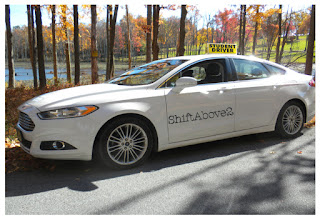14 Considerations and Questions to Ask a Driving School When Looking for a Quality 6 Hour GDL Program for your Teenager
 |
| We train Students in a mid-size car because most families have mid-size cars or larger. |
How to select the best driving school to suit your needs?
Consider the learning experience and goals you are seeking for your teenager as well as have an understanding about the program they will be using to teach your teenager especially if your teen has any level of a disorder.
The number of years a driving school has been in the business doesn’t necessarily mean they are one of the best nor does all the instructors combined years of teaching. Years teaching is not a gauge for quality instruction or indicates a quality instructor.
Affiliation with organizations doesn’t make that school great. It’s the driving schools’ programs quality and their instructor’s ability to provide quality training on a case-by-case for each student. Not every student learns at the same level.
Certification and completed programs an instructor completed are not necessarily indicating they are the best. Most certifications/programs are given if you met all the requirements. They are not based on a scale chart rating of performance or a minimum test grade achieved.
Pricing doesn’t gauge quality. Higher doesn’t always mean top level. Be wary if pricing is on the low end for your area unless you researched or verified that school or instructor by more than 1 referral or credible testimonials which should have current dates, full names and town/city. Most quality testimonials should have a picture of the student next to it.
Understanding the school’s policy of cancellation. If your teen or you decide that the instruction isn’t working well, how will they handle it? You have the right to terminate and only pay for services rendered.
Be cautious of schools scheduling all lessons back-to-back, more than 10 days apart, 45 minutes in length or trying to schedule a lesson before your teen goes to school in the am. There are downsides and focus and quality training may suffer. Advise only agree if you understand the downside. Most are just looking to fill their schedules or lacking quality.
Be cautious of schools that want to book lesson time before your teen goes to school in the am and then lesson time same day after school ends.
What to ask and look for when choosing the right Driving Instructor/program?
Know who the instructor will be before the 1st lesson and their qualifications.
Have them briefly describe their teaching style to determine if they may not meet your teen's needs or personality.
Will, your teen have the same instructor and car for all lessons or will they switch out?
Find out after how many teaching hours will Highway and Parallel Parking be taught? You don’t want your teen learning these after the first few hours of instruction when they have the least amount of experience and understanding.
Would other individuals also be in the car during your teen’s lessons? There are a few circumstances the state will allow this but, those should be listed in the contract, agreement of services or arranged with you.
Comments
Post a Comment